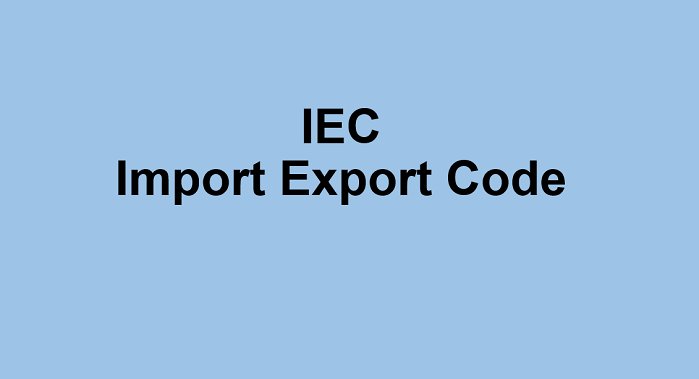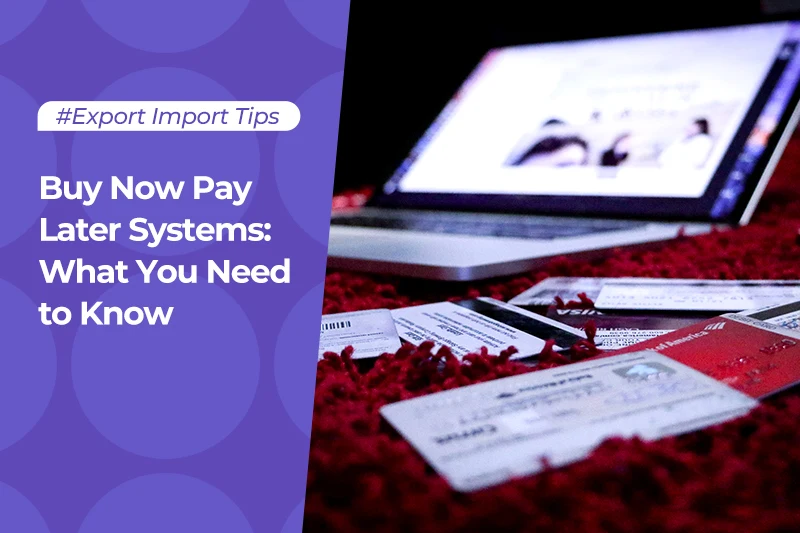How to get an export license in India

With its immense population and abundant natural resources, India is becoming a global superpower. As one of the world’s fastest-growing economies, the country has a rapidly expanding industrial sector, making it one of the largest exporters globally.
SME exporters within the country have their pick of several international destinations, from neighboring Asia-Pacific nations to countries in North America and Europe. For instance, India has a healthy trade relationship with the United States, with a trade balance worth nearly US $150 billion.1
While there are numerous opportunities for lucrative export business in India, starting on a solid foundation is critical. And that begins with obtaining the necessary permits and approvals, such as an Indian export license.
This article explains all you need to know about the export license and how to obtain one in India.
Table of Contents
What is an export license, and why do sellers need it?
Generally, countries regulate imports and exports as a matter of national and economic security. They consider it important to keep a firm eye on what goods enter their territory and the products allowed to leave the country.
When it concerns exports, countries enforce this regulation by requiring intending exporters to obtain an export license. Sometimes they may also make obtaining an import license a prerequisite to bringing goods into the country.
India, like most countries, requires exporters to obtain authorization for exports. The country’s Foreign Trade Policy (2015-2020) and Foreign Trade (Development and Regulation) Act 1992 make it mandatory to get an Import Export Code (IEC) for export from India.2
The IEC is a 10-digit number that authorizes a business or individual to ship named categories of products out of India. It is issued and administered by the Directorate General of Foreign Trade (DGFT) — a parastatal under the country’s Ministry of Commerce and Industry.
While some countries only require an export license for certain items, India treats the IEC as a condition for engaging in any export activities.3 So, if you intend to extend your business beyond India and serve international buyers, you will need to apply for and receive an export license.
Why do sellers need an export license in India?
Apart from the fact that an export license is mandatory for exports from India, there are other reasons why a license is necessary:
- Getting an IEC in India is a precondition to enjoying the export benefits and concessions provided under the Foreign Trade Policy
- Exporters require an IEC to register with seaports or airports where their goods must pass through customs
- Registration with Export Promotion Councils and Commodity Boards that guide and advise exporters is dependent on providing an IEC
- In some cases, exporters need the approval of certain Authorities or Agencies (such as agriculture) for exports, and an IEC will be key to getting approval
- Banks require exporters to provide their IEC before receiving payment from international buyers
Therefore, there’s no avoiding collecting an export license in India. To escape the frustration and resource wastage that non-compliance might cause, it’s best to plan early for an IEC.
Classification of export goods
Since the IEC specifies the goods you’re authorized to export, it’s essential to ask: are there any goods you’re not allowed to ship out of India?

In general terms, India’s Foreign Trade Policy states that all goods may be freely exported. But, like most countries, India limits or bars individuals and private businesses from shipping certain goods. These goods were specified as Negative List items under the Export-Import Policy of 1997–2002.
The classifications of export goods under the Negative List are as follows:
- Prohibited items: This list includes things the government will not sanction for export. International trade in these goods is forbidden, and any exporter who tries to ship these goods out of India may face administrative or criminal sanctions. Examples of items falling within the prohibited list include seashells, beef, all forms of wild animals, human remains, exotic birds, and peacock feathers.
- Restricted items: Compared to prohibited items, restricted items are not barred from exports. However, their transport out of the country is closely monitored, and export is only allowed subject to adherence to strict conditions. Items like sandalwood, live birds and animals, endangered species of plants and animals, firearms, sand and soil, silk, silkworms, silkworm seeds, and cocoons fall within this list.
- Canalized items: These items are not subject to international trade by individuals and private businesses. They can only be exported by specific government agencies authorized by law. For instance, in 1998, the government declared motor spirit as a canalized item, and it was made exportable only through the Indian Oil Corporation.4
In addition to the products on the Negative List, Indian law also restricts exports to certain countries. This is often the case with countries that have poor diplomatic or political relations with India or those that are current targets of international sanctions that India is obligated to enforce.
You may be barred from shipping Indian goods to these countries, or there may be restrictions on exporting specific goods to those destinations. For instance, the government may not sanction certain chemical compounds for export.
With that sorted, let’s turn next to the details of applying for and obtaining an Import Export Code in India.
Application process and required documentation
Applying for an IEC in India requires applying to the Director-General of Foreign Trade. The entire process can be concluded online, making it relatively convenient for business owners.
However, before launching into the application process, there are a few matters you should attend to first. These include:
- Setting up a business structure. Only a registered business such as a sole proprietorship, partnership, or company can apply for an IEC
- Opening a current bank account with a bank that has the authority to send and receive foreign currency
- Registering for a Permanent Account Number (PAN) — India’s version of a taxpayer number5
- Deciding on the products you want to export since you have to provide this information during the application process
With the pre-application matters resolved, you can move forward to file your IEC application with the DGFT.
Application process
The application process includes filling out the IEC application form (ANF 2A) and paying an Rs. 500 application fee on the DGFT website. Here are the steps involved:

- Go to the DGFT website at https://www.dgft.gov.in/ and click on “Apply for IEC.”
- Fill in your business details, including business name, bank account, PAN, and contact details, in Part A and submit.
- You will receive a registration code on the phone number or email you provided. Store the registration code somewhere safe, as you will need it to complete the application. You may also need the registration code in the future if there’s a need to refile certain information or documents.
- Return to your application on the DGFT website and proceed to fill Parts B and C
- Part D of the application requires you to read and sign a Declaration/Undertaking. You may sign this part digitally or print it out, sign physically, and send a copy of the signed document via post to the nearest DGFT office.
- Part E of the application will ask you to upload several documents to support your application. We have listed these documents below.
- Select the jurisdictional regional authority (JRA) that will have responsibility for processing your application. Your JRA is the DGFT office nearest to your business address.
- Pay the Rs. 500 application fee. There are two options: electronic funds transfer from your local bank account or by credit/debit card.
- Conclude the application by making a final submission. After submission, you will receive a message confirming receipt of your application.
Required documents
There are several mandatory documents you must upload during the application process, these include:
- A 3x3 passport photograph of the business owner, managing partner, or director
- Identification documents such as a driver’s license, international passport, voter card, or Aadhaar card
- Proof of address such as a utility bill, lease agreement, or deed of sale
- PAN card showing the business owner’s name, or the partnership or company name
- Certificate of incorporation, in the case of a company
- Bank certificate from the institution holding your current account. If you don’t have a bank certificate, providing a canceled cheque showing your business name and account number is sufficient.
In addition, applicants may be required to provide a copy of a current purchase order from an overseas buyer. You may also have to show a No Objection Certificate (NOC) for certain exports. For instance, if you want to ship medical-related products, you might need to show a NOC from the drug monitoring agency.
Standard procedure followed after application
After your application, the DGFT and allied agencies will consider your request and determine whether to issue an IEC.
The DGFT will pre-screen your application for compliance with stated requirements. If there are no problems, they will forward your application within three days to the ministry or department that has oversight on your chosen export products.
If there are anomalies, such as incomplete information or blurred documents, the DGFT will send you a deficiency letter within three days, asking you to correct or refile those pieces of information. You must respond to the letter within three days as well.
After receiving your application, the concerned ministry or department will review your application and provide their comments or a statement of no objection. They typically must do this within 30 days of receiving the application.
If the ministry or department does not object, the DGFT will send your application to the EXIM Facilitation Committee (EFC). The EFC oversees export-import issues generally and meets once a month.
Once approved by the EFC, your application will be authorized by the DGFT, and you will receive a notification by email informing you of the approval. The DGFT will also share the authorization letter with your JRA, who will then prepare and issue your IEC within three days.
Go to your JRA with your authorization letter and any other requested documents to claim your IEC. Overall, the entire process should take between 30–45 days.
Additional information
Depending on the nature of your chosen export products, the ministries or departments considering your application can request extra documentation. These requirements vary from application to application, but they might relate to your capacity to handle the export item, where you intend to source from, or further local permits.
It’s also worth noting that your IEC may be subject to terms and conditions relating to the number of items you can export. There may also be restrictions as to the description of these items, minimum pricing, or even the validity of the export license. Although IECs are generally non-renewable and have a lifetime validity once approved.
Get started on Alibaba.com
Obtaining an IEC gives you the legal platform to export goods from India, which is why it’s an important step to take. But your export business isn’t on solid footing until you find a reliable way to find and engage with international buyers who want your products.
Alibaba.com provides the perfect platform where international sellers can meet buyers and sell globally on the world’s largest B2B marketplace.
References:
1. https://2016.export.gov/india/doingbusinessinindia/index.asprapid-digitalisation-drives-b2b-ecommerce-during-pandemic/articleshow/88500483.cms?from=mdr
2. https://agriexchange.apeda.gov.in/FTP/ftp2015-20E.pdf
3. https://www.indiantradeportal.in/vs.jsp?lang=0&id=0,25,44
4. https://taxguru.in/dgft/import-canalised-items.html
5. https://tin.tin.nsdl.com/pan/
Start your borderless business here
Tell us about your business and stay connected.
Keep up with the latest from Alibaba.com?
Subscribe to us, get free e-commerce tips, inspiration, and resources delivered directly to your inbox.














